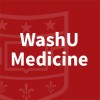Shave Margins in Breast Conservation Therapy (SMART)
Breast Cancer, Cancer of Breast, Cancer of the Breast

About this trial
This is an interventional treatment trial for Breast Cancer
Eligibility Criteria
Inclusion Criteria:
- Newly diagnosed, biopsy-proven stage 0-II breast cancer.
- Planning to undergo breast-conserving surgery.
- At least 18 years of age and no more than 85 years of age.
- Female.
- Able to understand and willing to sign an IRB-approved written informed consent document.
Exclusion Criteria:
- Prior surgical treatment for this diagnosis.
- Undergone neoadjuvant chemotherapy.
- History of prior chest radiation therapy.
- Known metastatic disease.
- Pregnant.
- Preference for mastectomy instead of breast-conserving surgery.
- History of ipsilateral breast cancer.
- Goggle assessment substudy: Iodine or seafood allergies.
Sites / Locations
- Washington University School of Medicine
Arms of the Study
Arm 1
Arm 2
Active Comparator
Experimental
BCS Arm (breast-conserving surgery - standard of care)
CSM Arm (breast-conserving surgery with cavity shave margins)
Defined as partial mastectomy, lumpectomy, or local excisional biopsy with or without needle/wire localization The ICG will be prepared per manufacturer instructions and diluted to allow for intravenous dosing up to 0.5 mg/kg (except for those patients with iodine or seafood allergies or in cases where the goggles are unavailable for use). Following the BCS procedures, the surgeon or a study team member will don the goggles and state the NIR fluorescence margin information of the excised primary tumor specimen and of and CSM that are taken.
Partial mastectomy, lumpectomy, or local excisional biopsy with or without needle/wire localization with the addition of additional tissue specimens from all 6 margins (anterior, posterior, superior, inferior, medial, lateral) of the wound cavity if possible. In cases where an additional margin would involve the skin at the anterior margin and/or the pectoral muscle at the posterior margin, only the 4 (or 5) remaining margins should be obtained A margin thickness of 1 cm will be the defined goal to establish uniformity among different surgeons and allow for appropriate pathological evaluation The ICG will be prepared per manufacturer instructions and diluted to allow for intravenous dosing up to 0.5 mg/kg (no iodine or seafood allergies). Following the BCS procedures, the surgeon or a study team member will don the goggles and state the NIR fluorescence margin information of the excised primary tumor specimen and of any CSM that are taken.
Outcomes
Primary Outcome Measures
Secondary Outcome Measures
Full Information
1. Study Identification
2. Study Status
3. Sponsor/Collaborators
4. Oversight
5. Study Description
6. Conditions and Keywords
7. Study Design
8. Arms, Groups, and Interventions
10. Eligibility
12. IPD Sharing Statement
Learn more about this trial
